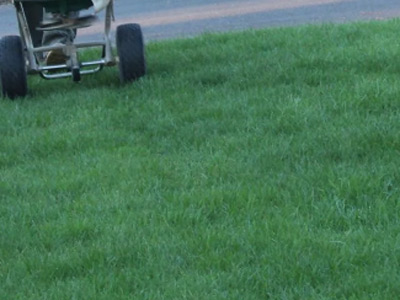7 Seeding and Fertilization Tips for Fall
 As summer gives way to the vibrant colors of fall, it's time for homeowners and garden enthusiasts to prepare their lawns and gardens for the changing season. Fall is an excellent time to establish or rejuvenate your lawn with seeding and fertilization.
As summer gives way to the vibrant colors of fall, it's time for homeowners and garden enthusiasts to prepare their lawns and gardens for the changing season. Fall is an excellent time to establish or rejuvenate your lawn with seeding and fertilization.
SCCR Landscapes, Inc. is a leader in the local landscaping and lawn maintenance space, and our team provides you with seven essential tips to ensure lush and healthy lawn come Spring. But before understanding the best ways to seed and fertilize during fall, let's look at its benefits.
The Benefits of Fall Seeding and Fertilization
Fall is a prime season for establishing or rejuvenating your lawn through seeding and fertilization for several compelling reasons:- Optimal Soil Conditions - During the fall, the soil is still warm from the summer, promoting seed germination. The combination of warm soil and cooler air reduces stress on emerging seedlings, allowing them to establish robust root systems before winter.
- Less Competition - Weeds tend to slow down their growth in the fall, providing new grass seedlings with a competitive edge. With fewer weeds, your lawn has a better chance of thriving.
- Ample Moisture - Fall often brings increased rainfall, reducing the need for frequent watering. This natural moisture benefits both seed germination and nutrient absorption from fertilizers.
- Reduced Pest and Disease Pressure - Many lawn pests and diseases are less active in the fall, giving newly planted grass a better chance to grow without disruption.
- Strong Root Development - By seeding and fertilizing in the fall, your grass has an extended period to focus on root development, leading to a healthier, more resilient lawn in the long term.
- Vibrant Spring Growth - Your fall seeding and fertilization efforts pay off when spring arrives. As temperatures rise, your lawn will be lush, green, and ready to flourish.
Seeding and Fertilization Tips for Fall
Here are a few tried and tested tips for seeding and fertilizing lawns during spring:- Choose the Right Seed: Selecting the appropriate grass seed is the foundation of a thriving lawn. Different grass types thrive in various climates and soil conditions. Research which grass variety suits your region and specific needs, whether it's shade tolerance, drought resistance, or foot traffic endurance.
- Timing is Crucial: Timing your seeding in the fall is essential. Early fall, typically late August to early September, is ideal for many regions. The soil is still warm from the summer, and there's usually enough moisture to help seeds germinate. Complete the seeding at least a few weeks before the first hard frost.
- Prepare the Soil: For seeds to take root and thrive, you must adequately prepare the soil. Remove any debris, such as rocks and dead vegetation. Loosen the soil with a rake or garden fork to create a welcoming environment for new seeds. Consider adding organic matter like compost to improve soil structure and nutrient content.
- Proper Seeding Techniques: A common mistake is overseeding, leading to overcrowding and unhealthy competition among grass seedlings. Follow the recommended seeding rates on the grass seed packaging to achieve optimal results. To ensure even distribution, use a broadcast spreader or a hand spreader. Lightly rake the area after spreading the seeds to cover them with a thin layer of soil.
- Soil Testing: Before you apply any fertilizers, it's essential to know your soil's nutrient levels and ph. You can conduct a soil test or have a professional analyze it. Soil testing will provide valuable insights into what specific nutrients your lawn needs and whether you need to adjust the ph.
- Choose The Right Fertilizer: Selecting the correct fertilizer for your lawn is critical. In the fall, it's generally recommended to use a balanced fertilizer with a nitrogen-phosphorus-potassium (N-P-K) ratio that suits your soil's needs. For example, a 10-10-10 or 15-15-15 fertilizer provides an even blend of essential nutrients.
- Apply Fertilizer Carefully: Proper fertilizer ensures that your lawn receives the nutrients it requires without overloading it. Follow these guidelines during application:
- a) Use a broadcast spreader to distribute the fertilizer evenly across your lawn.
- b) Set your spreader to the recommended rate listed on the fertilizer package.
- c) To prevent over-fertilization and uneven growth, ensure that it does not overlap when applying fertilizer.
- d) After fertilizing, water your lawn thoroughly. This helps the nutrients penetrate the soil and minimizes the grass-burning risk.
- e) Be aware of local regulations regarding fertilizer application, especially concerning phosphorus content, which may be restricted in some areas.
For information about our seeding and fertilization and other lawn maintenance services, please contact SCCR Landscapes, Inc. at 770-354-3486, or email us through this Online Form, and one of our experts will call you back soon to understand your requirements.
